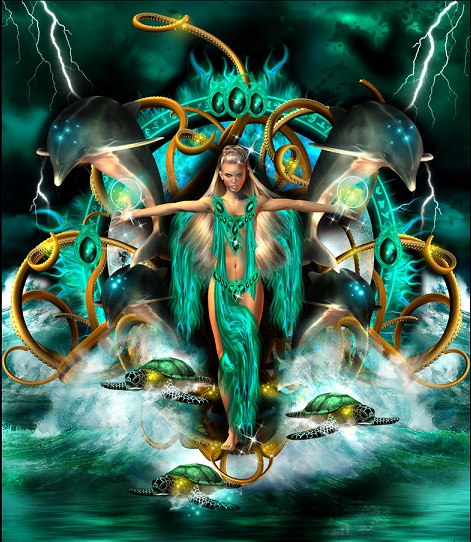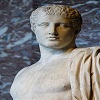Oceanides
three thousand fresh water nymphs, the daughters of Oceanus and Tethys
In Greek mythology, every element of the ancient world had a deity associated with it; thus the sun might be regarded as Helios, the moon might be Selene, and the winds were regarded as the Anemoi. To any group of people water is essential, and so the Ancient Greeks, believed that freshwater sources also had deities linked with them, these deities were the Oceanids.
The Oceanids were the 3,000 daughters of Oceanus, the Titan god of the great ocean, and the Titaness, Tethys. The Oceanids were therefore sisters to the 3,000 Potamoi, the river gods.
The Oceanids were often split down into five separate groupings; the Anthousai were flower nymphs, the Aurai were nymphs of breezes, the Leimonides were pasture nymphs, the Naiades were the nymphs of fountains and springs, and the Nephelai were the cloud nymphs.
The use of the figure 3,000 is purely nominal, and in ancient sources only about 100 Oceanids are actually named.
One of the most famous Oceanids was Styx, an Oceanid who was first to help Zeus during the Titanomachy. For this assistance, Styx was made one of the most important river deities associated with the river of the underworld.
Also famous in Greek mythology was the Oceanid Metis. Metis was the first wife of Zeus, and the personification of wisdom. Zeus would end up swallowing her to avoid a prophecy that said the god would be overthrown by her son. By swallowing Metis though, Zeus also gained all of her wisdom.
In the stories of Ancient Greece, Oceanids would also often appear as nursemaids; Theisoa, Neda and Hagno raised Zeus, and the five Nysiades were nursemaids of Dionysus. Also important in the ancient world was Dione (or Dodona), the nymph associated with the Oracle of Dodona.
Some Oceanids were famous because of who they married; Doris married Nereus, and Hesione married Prometheus. Others were more famous because of their offspring; Elektra was mother to Iris, Eurynome was mother to the Charities (as well as being a handmaiden of Hera), Clymene was the mother of Phaethon (as well as being the personification of fame), Perseis was mother to Aeetes, Perses, Pasiphae and Circe, whilst Pleione was mother to the Pleiades.
As well as Metis and Clymene, other Oceanids were personified blessings, including Peitho (persuasion), Telesto (success), Tyche (good fortune), and Pluto (wealth).
Some Oceanids were linked to specific regions of the ancient world, including the Oceanids Europe, Asia (the Anatolian peninsular), Libya (Africa), Beroe (Beirut), Daeira (Elusis), and Kamarina.
Groupings of Oceanids were also named by some ancient writers. Sixty virgin Oceanids were said to be the attendants of the Olympian goddess Artemis, whilst Persephone was playing with a group in a flowery meadow when she was abducted by Hades.
The likes of Amphitrite and Thetis are occasionally named as Oceanids, but they are normally said to be Nereids.
Generally speaking, the Oceanids are separate from the Nereids, the sea-nymphs. The Nereids, the fifty daughters of Nereus and Doris, are the nymphs of sea, or salt, water, and were normally associated with the Mediterranean. Confusingly, despite their name, the Oceanids were only associated with freshwater; Oceanus being the deity of the freshwater river that encircled the entire earth.
To the Ancient Greeks, the existence of Oceanids helped to explain why freshwater sources existed. Additionally these water nymphs also explained the existence of other deities, and were, as a result, the focus of widespread worship.
[1]












